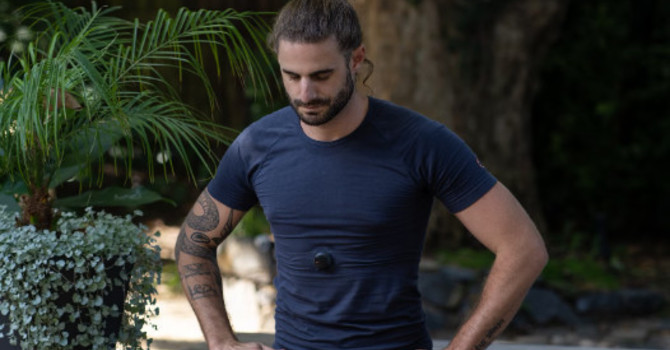Back pain affects nearly everyone at some point, from office workers to athletes. If you’ve been sidelined by stiffness, soreness, or limited motion, back pain physical therapy may be your best path toward lasting relief. At Hudson Point Physical Therapy, our expert clinicians specialize in personalized care plans that address the root causes of pain, not just the symptoms.
Whether you’re dealing with mid back pain, lower back strain, or chronic discomfort, our therapists use proven techniques to help you move better, feel stronger, and prevent future flare-ups.
Understanding the Problem: Common Causes of Back Pain
Back pain can result from poor posture, muscle imbalances, repetitive stress, or sudden injury. Conditions like herniated discs, arthritis, and sciatica often contribute to pain that limits daily activities.
Physical therapy for back pain focuses on identifying these underlying issues. At Hudson Point, we start with a full assessment to determine whether your pain stems from muscle weakness, limited flexibility, or alignment issues. This precise diagnosis allows us to create a treatment plan tailored to your body and goals.
What to Expect at Physical Therapy for Lower Back Pain
Many patients wonder what happens during a physical therapy session for lower back pain. Here’s what to expect:
-
Comprehensive Evaluation: Your therapist will assess your posture, range of motion, and pain triggers.
-
Manual Therapy: Hands-on techniques help improve mobility, reduce tension, and restore normal joint function.
-
Targeted Exercise Program: You’ll learn lower back stretches and strengthening routines that support the spine.
-
Education & Prevention: Therapists teach you proper movement mechanics to prevent lower back strain and reinjury.
Sessions typically progress from gentle pain relief to rebuilding strength and improving endurance. The goal is long-term recovery—not just short-term relief.
Physical Therapy for Lower Back Pain: Building a Stronger Foundation
When pain lingers in the lower back, muscles that stabilize the spine often weaken. Physical therapy for lower back pain focuses on retraining these core stabilizers to support your posture and reduce stress on the spine.
Common treatments include:
-
Core stabilization exercises that strengthen deep abdominal and lumbar muscles.
-
Stretching programs for hamstrings and hip flexors, which often contribute to tightness.
-
Manual therapy and mobilization to reduce stiffness and promote flexibility.
By improving strength and alignment, you not only relieve pain but also improve your balance, coordination, and mobility for the long term.
Physical Therapy for Low Back Pain: Techniques That Work
Our approach to physical therapy for low back pain combines multiple evidence-based methods:
-
Heat and cold therapy to reduce inflammation and muscle tension.
-
Electrical stimulation for pain modulation.
-
Postural retraining to help you maintain a neutral spine during daily activities.
-
Movement re-education for lifting, bending, and sitting safely.
These interventions work together to accelerate healing while preventing future injury.
Mid Back Pain: The Overlooked Problem Area
While lower back issues get most of the attention, mid back pain (thoracic region discomfort) can be just as limiting. Poor posture, especially from prolonged computer use, is a leading cause.
Physical therapy for mid back pain often includes:
-
Thoracic mobility drills to restore flexibility.
-
Strengthening exercises for postural muscles.
-
Ergonomic education for workplace setup and daily habits.
By addressing this often-overlooked region, you can prevent compensatory patterns that lead to lower back pain and shoulder strain.
Lower Back Stretches to Relieve Pain and Improve Flexibility
Your physical therapist may prescribe lower back stretches to help relieve stiffness and promote better posture. Here are a few that are often recommended:
-
Child’s Pose: Gently stretches the spine and hips.
-
Knee-to-Chest Stretch: Eases tension in the lower back.
-
Cat-Cow Pose: Improves spinal mobility and circulation.
-
Pelvic Tilts: Strengthen the lower abdominal muscles while loosening tight back muscles.
These should always be done under professional guidance, especially if you’re recovering from lower back strain or injury.
How Hudson Point Physical Therapy Can Help
At Hudson Point Physical Therapy, our team is dedicated to helping you move freely again. We combine advanced rehabilitation techniques with personalized care to get you back to the activities you love.
Here’s what sets us apart:
-
Individualized Treatment Plans: Every patient’s back pain is unique. We tailor sessions to your specific condition and recovery goals.
-
Hands-On Manual Therapy: Our clinicians use soft tissue and joint mobilization to reduce stiffness and pain.
-
Functional Movement Training: We focus on helping you move efficiently in daily life and sports.
-
Patient Education: Empowering you with self-care strategies, from posture correction to daily stretching routines.
We believe that healing requires more than just symptom management—it’s about restoring confidence in your body’s ability to move.
Preventing Future Back Pain
Once your pain subsides, maintaining your results becomes the next priority. Our therapists will guide you through:
-
Home exercise programs designed for your needs.
-
Ergonomic recommendations for work and sleep positions.
-
Movement habits to minimize the risk of re-injury.
Preventative care is an essential part of every back pain physical therapy plan, ensuring you remain strong and pain-free for the long term.
Take the First Step Toward a Pain-Free Life
Back pain doesn’t have to define your daily life. With the right physical therapy for back pain, you can regain comfort, flexibility, and strength.
At Hudson Point Physical Therapy, we’re committed to helping you recover through evidence-based treatment, compassionate care, and customized exercise plans. Whether you’re struggling with mid back pain, lower back strain, or simply want to move better, our experienced team is ready to help you start your recovery journey.
Schedule your evaluation today and take the first step toward a stronger, pain-free back.


